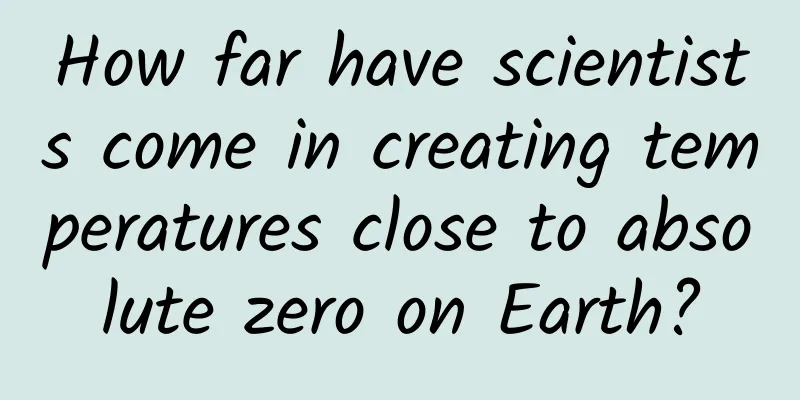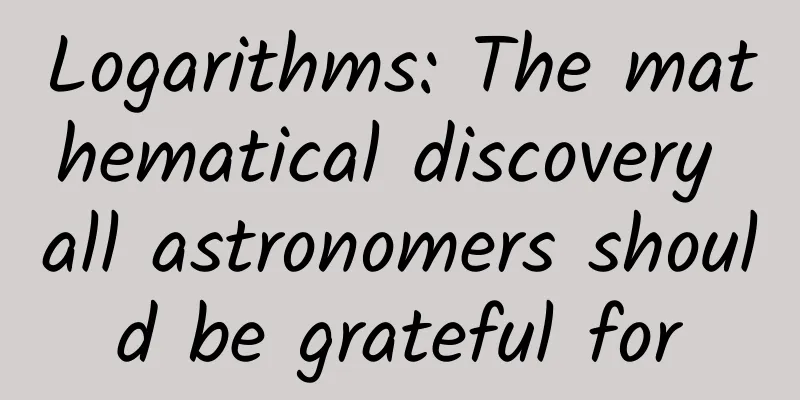How far have scientists come in creating temperatures close to absolute zero on Earth?

|
Before going out every day, I habitually check the weather forecast. In addition to whether it is sunny, cloudy, windy or rainy, the value I pay most attention to is the temperature, which largely determines what clothes I should wear when going out. This physical parameter that is closely related to us describes the degree of hotness or coldness of an object. The topic we are going to talk about today is temperature, especially the physical limit of temperature - absolute zero. Absolute zero is the lowest temperature that can be reached in the universe, because at this temperature, the thermal motion of atoms and molecules that make up matter will completely stop. Of course, this is the limit derived from the ideal gas model. When there are other interactions between matter, especially when considering quantum effects, motion always exists, which I will not discuss here. Today, let's focus on why we need to keep approaching absolute zero and how we are approaching absolute zero step by step. There are many kinds of interactions in matter, also called forces. The known forces include strong interaction, weak interaction, electromagnetic interaction and gravitational interaction. In our daily life, the most common ones are electromagnetic force and gravitation. When a large number of particles gather together, the interaction between them and the thermal motion of the environment will reach a certain balance, thus forming a relatively stable state, which is called "phase" in physics. Temperature actually describes the intensity of the thermal motion of the environment. When we change the temperature, the above balance will be broken at a critical point, causing the substance to change from one phase to another. A typical example is that when the temperature drops below 0 degrees, water will freeze and change from liquid to solid, and when the temperature rises to 100 degrees, water will boil and change from liquid to gas. If we continue to increase the temperature, the substances bound together by certain strong interactions will gradually disperse, and we can continue to pursue the original form of matter, which is actually what high-energy particle physics does. The picture comes from Tuchong.com On the other hand, if we continue to lower the temperature, some weaker interactions will gradually emerge, showing many novel condensation phenomena, such as superconductivity. Although the temperature of the entire universe has cooled to only 2.7K, which is about minus 270 degrees, we feel the warmth of the sun on Earth, and the temperature is very high. If we want to explore various strange effects at low temperatures on Earth and try to use them, we must artificially create a stable low-temperature environment. The most common low-temperature technologies for modern people are refrigerators and air conditioners. In summer, they are necessary conditions for survival along with Wi-Fi. Of course, physicists' pursuits are far more than that. They always want to do their best to explore all possible material structures. Along with this, they also pursue the ultimate low-temperature environment. On the road to obtaining low temperatures, there is a pioneer we are very familiar with, and that is Faraday. Yes, it was the Faraday who discovered the law of electromagnetic induction. When he was studying the chemical properties of chlorine, he accidentally obtained liquid chlorine. He concluded that it was caused by low temperature and high pressure. From then on, he couldn't stop, and he liquefied almost all the known gases at that time. Only oxygen, nitrogen, hydrogen and other gases could not be handled, so he determined that these gases were "permanent gases." Later facts proved him wrong, of course, but gas liquefaction was his side job after all. He accidentally liquefied chlorine because he was an assistant to the chemist David at the time, and his main job was actually chemistry. Next, Frenchman Cailleté liquefied oxygen and nitrogen, using an important effect, the Joule-Thomson effect. In today's dilution refrigerators, there is an important component called the "Joule-Thomson exchanger," which is an important part of liquefying helium. Nitrogen liquefaction pushed the low temperature limit to minus 196 degrees (77K). But the more important person is Dewar. The current cryogenic storage tank is called Dewar. Dewar's important contribution is to liquefy hydrogen. The method used is step-by-step liquefaction and cooling: first liquefy the gas that is easy to liquefy, then do throttling expansion to further reduce the temperature, then pass another gas that is more difficult to liquefy into it to liquefy it, and then throttling expansion to cool it down, and so on. Using this miraculous method, he finally achieved a low temperature of minus 260 degrees. Dewar's wish was to continue to conquer the liquefaction of the last "permanent gas" - helium. Unfortunately, this gas was too scarce, and he could not get enough, and finally failed to fulfill his wish. The person who took over the baton was Onnes, who was the head of the physics laboratory at Leiden University in the Netherlands at the time. Under his leadership, they quickly carried forward Dewar's step-by-step refrigeration technology, and with the blessing of money, they built a large liquefaction plant. Using the Hampson-Linde cycle, cryogenic Dewar and Joule-Thomson effect, he successfully liquefied helium, and the temperature limit was further pushed to minus 269 degrees. Later, using the decompression and cooling technology, it was further pushed to 1.5K, which is about minus 272 degrees. He also won the title of "Mr. Absolute Zero". Onnes discovered the superconductivity phenomenon for the first time with the blessing of liquid helium, which is another big story. After the maturity of helium liquefaction technology, liquid helium has become one of the most commonly used cryogenic refrigeration liquids. In addition to the low temperature, more importantly, helium is an inert gas, non-toxic and harmless, will not explode, and is much safer than liquid hydrogen. However, 1.5K is still a long way from absolute zero, and the road to absolute zero is far from over. Helium also has an isotope, helium-3 (3He). This is a substance that will never become solid under normal pressure. By reducing the pressure and cooling the helium-3, the temperature can theoretically be pushed closer to absolute zero, but the pumping speed required is too high and cannot be achieved technically. Later, scientists discovered that when the temperature of a solution of helium-3 dissolved in helium-4 drops below about 0.8K, the two phases separate into a concentrated phase and a dilute phase. When helium-3 atoms pass through the interface separating the two phases, they take away some heat. This has become the basis of the most important technology for obtaining extremely low temperatures in solids - dilution refrigeration technology. This is also the meaning of the word dilution. Since there is still about 6% helium-3 in the dilute phase even at absolute zero, this refrigeration process can continue until very close to absolute zero. Dilution refrigeration can reduce the temperature to a few mK, which is only a few points higher than absolute zero. Further down the line, there is nuclear adiabatic demagnetization technology, which can also reduce the temperature to below 1mK. So far, the technology of solid cooling has basically reached its limit. However, by laser deceleration of a small group of atomic gas, the gas temperature can be reduced to the micro-K level. We don’t know where the limit of low temperature is, and I believe that the pace of exploration will never stop. Today, we have discovered that ultra-low temperature can be used to develop some technologies that may subvert the future world - quantum computing. If it becomes a reality one day, this may be the greatest blessing that ultra-low temperature technology brings to mankind! This article is a work supported by Science Popularization China Starry Sky Project Author: Jin Yirong Reviewer: Zhou Xiaoliang (Physics Laboratory, Beijing Jiaotong University) Produced by: China Association for Science and Technology Department of Science Popularization Producer: China Science and Technology Press Co., Ltd., Beijing Zhongke Xinghe Culture Media Co., Ltd. |
>>: How powerful will smart equipment be in subverting future battlefields?
Recommend
Behind the sharp drop in China Unicom's revenue growth: FDD is to blame
China Unicom's first-half financial report re...
Introduction to PP Assistant promotion effects and advertising promotion cases!
pp assistant promotion case introduction Promotio...
Does it really help to sleep more when you have a cold?
After being infected with the Omicron strain of t...
What are the main methods of Internet marketing and which ones are the most effective?
Nowadays, any company must do marketing and promo...
Adjustment of individual income tax withholding method to be implemented from July 1, 2020
On July 29, the State Administration of Taxation ...
Can this much-hyped supplement really make your hair darker?
gossip “Taking tyrosine supplements can really ma...
High-quality case studies on information flow delivery in the automotive industry
It’s the end of the year and it’s the crazy car b...
Deconstructing the underlying logic behind the growth of new domestic beauty brands!
In the cosmetics category, there are two phenomen...
How to write a countdown short copy?
During the Double Eleven period, when others were...
Artificial intelligence! This is good stuff because it can help astronomers find gravitational waves
Hey, HAL, can you help us find black hole impacts...
What is a suitable gift for teachers on Teacher's Day?
Teachers' Day is coming soon. Every Teacher&#...
Why do most people prefer meat to vegetables?
Many people feel that a dish without meat has no ...
As the app dividend fades, will female players support the second half of Internet traffic?
Although Liang Yongan, associate professor of the...
Short video promotion: How to quickly attract users and achieve conversions?
In the era of content consumption, short videos h...
Be careful of waist aging before aging! These postures are the most harmful to waist...
Sitting for a long day at work and lying down lik...









